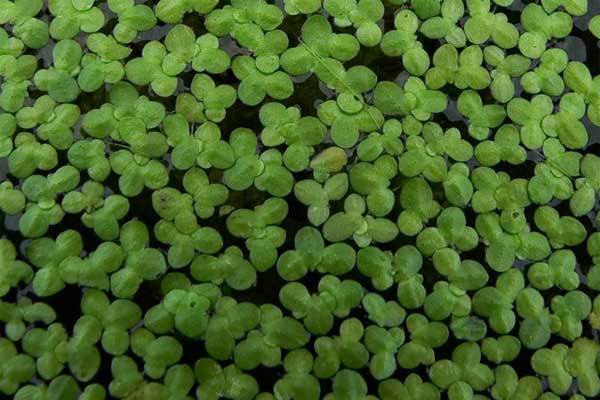Duckweed

Duckweed is an aquatic plant found in marshes. It has a tremendous capacity for rapid growth, being able to double its mass in 24 hours!
Its nutrient composition depends on the availability of nutrients, and achieving up to 43% crude protein (dry-matter basis) is not impossible. Although it can contain about the same level of protein as soybean meal, for example, its high yield capacity means that it is possible to produce about 10 tones of protein per hectare per year, compared only to 1 tone for soybeans. In addition, duckweed has a neutral carbon footprint and this makes it an ideal plant to be used in waste ponds. Finally, it is considered as an alternative crop for the production of biofuels.
Interesting as this plant might be, research on its use in pig feeding is rather scarce. Limited experimental results indicate that feeding more than 5% of dried duckweed in diets for growing pigs can reduce growth performance, indicating either the presence of antinutritional factors or a severely unbalanced protein profile. In contrast, sows fed ensiled duckweed as part of a balanced ration had improved reproductive performance.
Practical experience from Russia (thanks to Sergio Stepanow) tells us that pigs enjoy eating large quantities of fresh duckweed, but feed intake drops markedly about one week afterwards. Thus, local farmers feeding fresh duckweed limit its allowance to 1-2 kg per pig per day to avoid feed refusal.
Given the potential and current interest on duckweed, I would be eager to read about your experiences!











